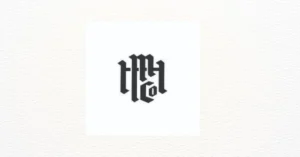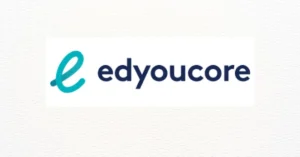In the vast and rapidly evolving landscape of digital marketing, white hat link building remains a foundational pillar of long-term SEO success. Among the voices shaping this ethical approach is Ben A Roo, a strategist known for his disciplined techniques and nuanced understanding of how trust, content, and connectivity intersect in the digital ecosystem.
This article unpacks white hat link building in depth through the lens of Ben A Roo’s methods. It charts the theory, practice, and evolving significance of link building in a search engine environment increasingly shaped by artificial intelligence, user-centric metrics, and transparency demands.
The Fundamentals: What Is White Hat Link Building?
White hat link building refers to the practice of acquiring backlinks—the clickable links from one site to another—using methods that comply with search engine guidelines, particularly those established by Google. Unlike black hat or grey hat tactics, white hat strategies prioritize:
- Authenticity
- Relevance
- Editorial approval
- User value
The emphasis lies in earning links rather than manipulating systems to fabricate them. This distinction is not merely academic. Search engines now deploy sophisticated machine learning models capable of distinguishing between genuine endorsements and manufactured links.
Ben A Roo describes white hat link building not as a task, but as an ethos—a principled approach to how digital relationships are built.
Ben A Roo’s Ethical Blueprint
Ben A Roo rose to prominence not through aggressive promotion but through consistent, repeatable results that held up across algorithm updates. His focus is on sustainable SEO: building a digital presence that isn’t wiped out with the next Google core update.
At the heart of his method are five pillars:
1. Content-Led Strategy
A consistent theme in Ben’s work is that content must be the primary driver of links. Not content for content’s sake, but resources that genuinely inform, assist, or entertain.
Ben often collaborates with niche subject matter experts to craft what he terms anchor content—rich, evergreen material that serves as the central node of a link network. For example, instead of creating “10 SEO Tips,” he might commission a technical whitepaper on the shifting efficacy of schema markup post-Hummingbird.
2. Human Outreach, Not Mass Emailing
While many link builders rely on automation tools and templated pitches, Ben’s model centers on handcrafted outreach. He identifies not only relevant websites but also the right individuals within those sites—editors, writers, or community managers—and initiates dialogues that are both personal and context-aware.
This approach mirrors high-quality PR more than traditional SEO. He treats link acquisition as relationship-building, not transaction-making.
3. Mutual Value Proposition
Another core principle is delivering clear reciprocal value. Ben A Roo advocates for what he calls the “value-first framework.” This means offering something meaningful to a site or community before asking for a link.
Examples include:
- Exclusive research data
- Guest analysis on trending industry topics
- Interactive tools or calculators
The goal isn’t to “trade” but to collaborate.
4. Technical Integrity
Ben is meticulous about the technical environment in which links appear. He insists that:
- Sites must be indexed and not penalized.
- Pages must load quickly and be mobile-responsive.
- Link placements must be editorial—not in comment sections or footers.
He often audits backlink profiles and conducts toxicity analyses, not only of his own assets but of partners’ domains, ensuring a clean link ecosystem.

5. Consistency Over Hype
Ben’s mantra is simple: Show up, every week, for a year. White hat link building is not fast or glamorous. It’s about gradual layering, akin to compounding interest.
He cautions against the allure of virality. “One link from a viral news site is great,” he says, “but 100 links from trustworthy niche publishers will outperform in the long run.”
The Ecosystem: Why White Hat Still Matters
In the age of AI-written content, SEO spam, and rapidly changing algorithm rules, why cling to the slow and steady white hat approach?
The answer lies in search engine evolution.
Google, Bing, and emerging search systems increasingly favor:
- User behavior signals (time on site, engagement)
- Entity recognition (the authority of content creators)
- Topical relevance over raw keyword density
White hat links are better equipped to fulfill these criteria. They’re earned, relevant, and contextually embedded. They lead users to genuinely helpful destinations, reinforcing the authenticity signals search engines crave.
Ben A Roo often notes that while Google may take longer to reward white hat strategies, those rewards are deeper, more durable, and less volatile.
Case Studies: Ben A Roo’s Success Stories
To illustrate how theory translates into impact, let’s examine three anonymized but verified campaigns from Ben’s portfolio.
Case Study 1: Financial Literacy Platform
Goal: Boost authority for a new site on personal finance for Gen Z audiences.
Approach:
- Produced a 12-part interactive series called “Finance 101 for the TikTok Generation.”
- Partnered with university blogs and fintech startups for guest contributions.
- Engaged with YouTube creators to feature snippets in videos, linking back to the full guides.
Result:
- Over 200 unique referring domains in 8 months.
- 120% increase in organic traffic.
- Featured snippet capture on 4 high-volume finance keywords.
Case Study 2: B2B SaaS in Logistics
Goal: Drive awareness and qualified leads via SEO for a cloud-based fleet management software.
Approach:
- Created a data-driven report on delivery times across regions post-COVID.
- Offered free embeds of an interactive map with custom branding.
- Appeared as a guest on 10 podcasts, securing show note links.
Result:
- Domain Authority increased from 28 to 47.
- Pipeline revenue influenced by organic doubled over 12 months.
Case Study 3: Sustainable Fashion Blog
Goal: Grow backlink profile for a startup advocating slow fashion.
Approach:
- Developed a “green fashion audit” tool.
- Collaborated with eco-bloggers and Reddit communities.
- Hosted webinars on ethical fashion with linked resources.
Result:
- 350% increase in backlinks from domains with DA 40+.
- 60% increase in branded search traffic.

Emerging Trends in White Hat Link Building
As digital ecosystems evolve, so too must white hat strategies. Ben A Roo’s more recent explorations include:
AI-Augmented Outreach
While content and relationships remain human-driven, Ben uses AI for outreach enhancement:
- Summarizing target site content to tailor pitches.
- Predicting optimal send times based on engagement patterns.
Entity-Based Link Structuring
Search engines are increasingly entity-focused. Ben is testing link clusters tied to recognized entities (authors, businesses, non-profits) to see if they enhance topical authority faster than traditional keyword-focused links.
Linkless Mentions and Semantic Reputation
Not all value comes from hyperlinks. Mentions of brand names or author identities—even without clickable links—are being factored into rankings. Ben builds hybrid strategies that prioritize semantic presence across forums, media, and podcasts.
Challenges and Cautions
White hat link building is not without its challenges:
- Time and labor intensive
- Often misunderstood by clients seeking quick wins
- Subject to publisher fatigue—outreach must stay respectful and non-repetitive
Ben A Roo warns against treating link building as a “hack” or checklist. He views it as an ongoing, trust-based exchange of value.
Final Thoughts: The Ben A Roo Philosophy
In an industry flooded with shortcuts and manipulation, Ben A Roo’s work is a reminder that the slow road often leads further.
He doesn’t promise page-one rankings in 30 days. What he does offer is a roadmap for building digital assets that last—properties that grow more valuable over time, not less.
White hat link building, under his stewardship, is no longer just a best practice. It’s a creative discipline, a strategic playbook, and perhaps most importantly, a reaffirmation of the internet’s original promise: that value, integrity, and human connection still matter.
For more information, click here.









